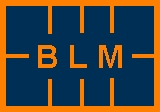SIDS monitor (Sudden infant Death syndrome, cradle death, sudden child death)
Monitor for the monitoring of the child’s respiration for the prevention of cradle death.
BLM has developed a functional pattern of a very reliable monitor for the registration of respiration motions of the child.
The patenting by the European Patent Office is applied. The nationalization will probably still take place in 2003.
The principle behind BLM’s SIDS monitor:
Light gets coupled with a light guide. The light guide is woven into the fabric e.g. the shirt of the child. The light guide follows the motion of the child’s chest (caused by respiration). These motions of the light guide change the strength of the light which passes the light guide. The changes of light intensity are measured continually. If there are no changes of the light intensity for a defined period, indicating that the child neither moves nor breathes, an alarm is triggered.
The characteristics of BLM’s SIDS monitor
- It is inexpensive, because the technology consists only of a low-cost T-shirt with a simple synthetic fiber woven in as a light guide.
- False alarms do not occur, because a good contact to the child’s body is always maintained.
- The system is secure, because it is based on the measurement of respiration motions.
- The system is easy to use, because no electrodes or glue sensors have to be fixed to the child’s body; furthermore this technique eliminates any need to lay the child onto a mat, which would naturally be more susceptible to faults.
- Measurement and detection of apnoeas is thus problem-free and comfortable for child and parents.
Other advantages of the SIDS monitor compared with other monitoring devices:
There is no current source on the child and consequently no "electronic smog" caused by the monitoring. False alarms, caused by dropped electrodes or by bad contact of the child with a monitoring mat can are avoided, because the infant cannot remove her/his clothes. Alternately, other monitoring systems employing mats etc. are subject to distressing false alarms when a pillow or toy gets between the infant and the monitoring sensor. However, the little shirt with the woven-in light guide cannot fall off, is necessarily in contact with the chest and thus avoids false alarms.
Ear canal pulse oximetry is of course also applicable to the child as a SIDS monitoring device. The ear canal pulse oximetry sensor of BLM is of course not absolutely displacement proof - as opposed to BLM’s T-shirt SIDS monitor.
One possibility to maximize safety and monitoring power would be to combine the two technologies as a means of carrying out SIDS monitoring.
Bio / vital parameter - monitoring systems of the 3rd generation
We work in the domain of innovative sensors for 3rd generation bio / vital monitoring , in particular on sensors for the monitoring of vital parameter in potentially helpless people (for example, apoplexy, hypoglycaemia, accidents and falls, sleep-apnoe).
With an increasingly mobile population, it is especially important to improve sensors so that movement artifacts are minimized. Along with this continuous monitoring, we are also working on sensors for the detection of sleep-apnoe, apoplexy, hypoglycaemia and other similar problems.
|
|
In Germany alone approximately 340 children every year die within the first year of their life from "sudden infant death syndrome." That’s one in every 2000 infants.
BLM has developed and patented a very innovative concept for the monitoring of children during sleep. BLM is now seeking a partner for this project, to help establish this monitor on the market.
|





